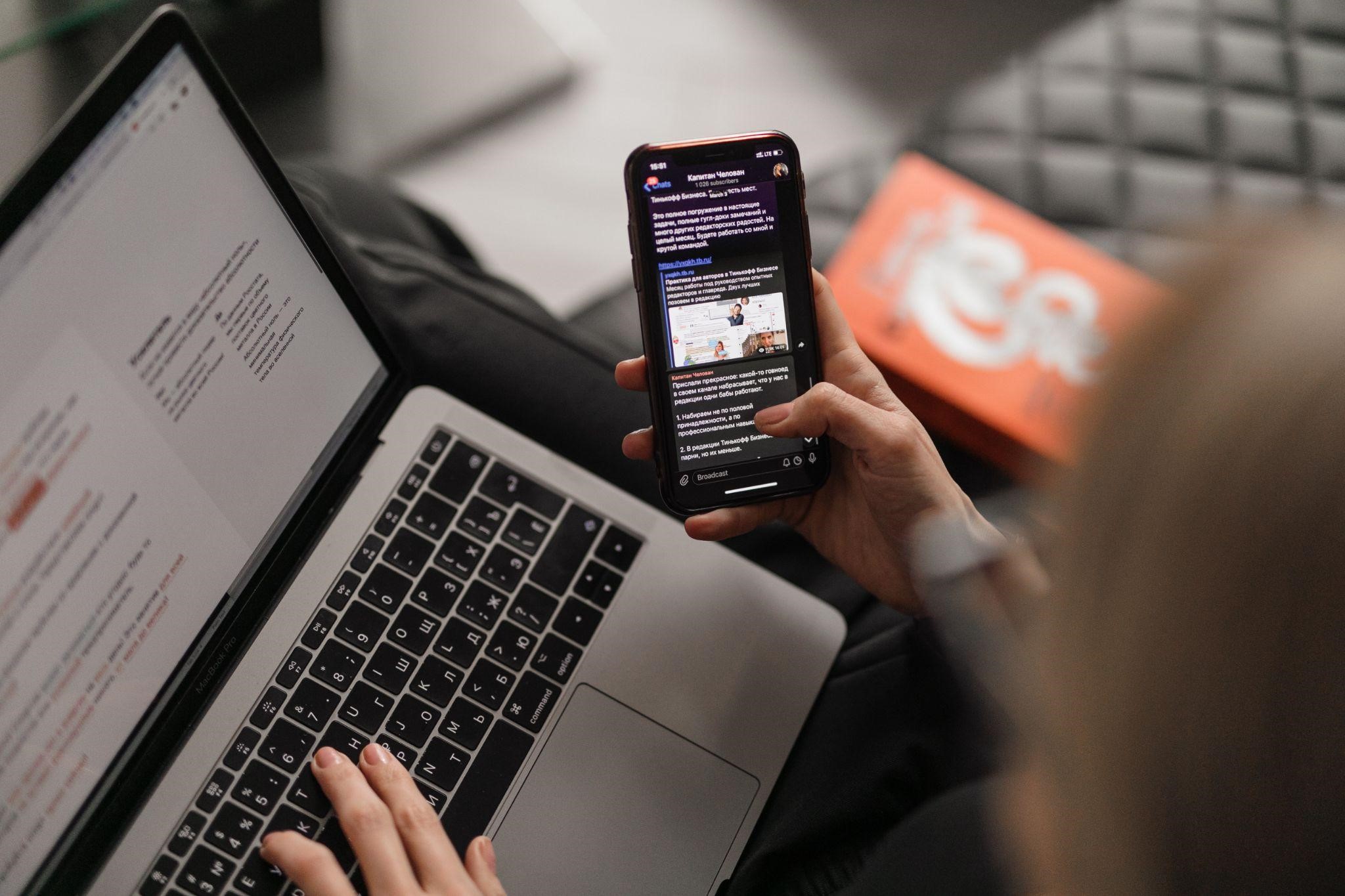
Sales is a complex process with many steps and variables that can affect the outcome. Sales training for employees is important for a number of reasons. It can help employees learn about sales processes, tactics, and best practices. It can also help them build more confidence and credibility with customers. All-in-all well-trained team members showcase a better sales effectiveness leading your business to growth.
This article explores how sales copy can influence the overall sales process and help you plan and generate compelling sales emails.
What is an email sales copy?
The purpose of sales copy is to persuade customers to take specific actions. It can be used to encourage readers to buy a product, join a mailing list, download material, or take any other action that will assist your company meet its sales goals. Informative media such as emails, pamphlets, and online pages frequently include sales copy.
The first rule of compelling copy, whether for an ad or an email, is that it must be something people want to read. It all starts with the subject line in email writing. The subject line copy makes a vital impression even before your readers open the email. This is why split-testing (A/B) your subject lines will motivate you to improve your sales copywriting skills.
A well-crafted subject line tempts the recipient to click, much like the headline of a blog post or landing page does. Pretty much nothing occurs in digital marketing, especially email marketing until somebody clicks on a link.
It takes time to become an expert in email copywriting. It’s stated that writing a decent short story is more complex than writing a full-fledged novel. The same can be said about email. That is why we’ve put up thirteen crucial steps to get you started.
12 Tips for writing sales copy
Anyone can find sales copywriting difficult, but a lack of creativity and skill can be quickly overcome with a bit of planning. To perfect your sales copy, follow these thirteen steps.
1. Keep it simple and to the point
You’re doing it incorrectly if you’re writing numerous words of copy in your emails. People only scan specific emails, although they might spend a lot of time browsing through their inbox while doing other things.
Get to the bottom of the issue. In your email newsletter, let your readers know what’s new, how you can help, or what you want them to read and do.
Large parts of the text will be taxing on the eyes and push readers to close the email, so break up your content with lots of white space. To make your point, use bulleted lists, brief phrases, and inquiries as required.
You should try to avoid long sentences. Instead, be brief and to the point. Use sensory copy with lots of adjectives to evoke sights, sounds, and even scents.
2. Make things personal with handwritten cards
Include handwritten thank you notes at the bottom of your email to show that you care for your readers.
Writing a handwritten thank-you note is one of the most effective methods to express gratitude. Of course, thank you emails, and phone calls are equally acceptable methods to show appreciation, but handwritten notes make the person receiving the note feel extra special.
3. Send if you have something to share
Many businesses appear to feel that a newsletter should be created and distributed regularly, regardless of what they have to say (or don’t have to say).
Local media organisations face a similar challenge; only they must generate material every day, regardless of whether any events from the previous 24 hours are truly noteworthy.
Advertisers want audiences to be updated on happenings in their local regions regardless of each day’s reporting amount or quality. Thus companies are not news media that must generate material to fill planned broadcast time, newspapers, or other media.
In other words, make sure you only send emails when you have something worthwhile to say.
4. Focus on the subject line
The email subject line is the email copy’s equivalent of a headline. Your readers won’t open it if it isn’t helpful or engaging, and if it doesn’t motivate your readers to take action.
Put as much thought into your subject line as you would into a compelling blog title. For example, if you’re going to spend about four hours on email copywriting, you should devote half of that time to the subject line.
As you consider your next subject line possibilities, keep the following factors in mind:
- Length: Short subject lines (between six and ten words) have the highest open rate. This is most probably since most individuals read emails on their smartphones. If your email subject line is lengthy, it can look fantastic on a computer screen, but mobile viewers won’t get the full story – and they won’t open it.
- Word selection: In the subject line, use action verbs. Before they even read the email, recipients will understand what kind of message you want to deliver. To generate a sense of urgency, use words like “call us now,” “you deserve this”, or “don’t miss out.”
- Maintain a personal touch: Using actual people’s names in your “to” and “from” fields will increase your open rates. Consider email as a private communication platform. It’s reassuring for readers to get an email from a genuine person rather than a corporation.
5. Don’t forget to include the preview text
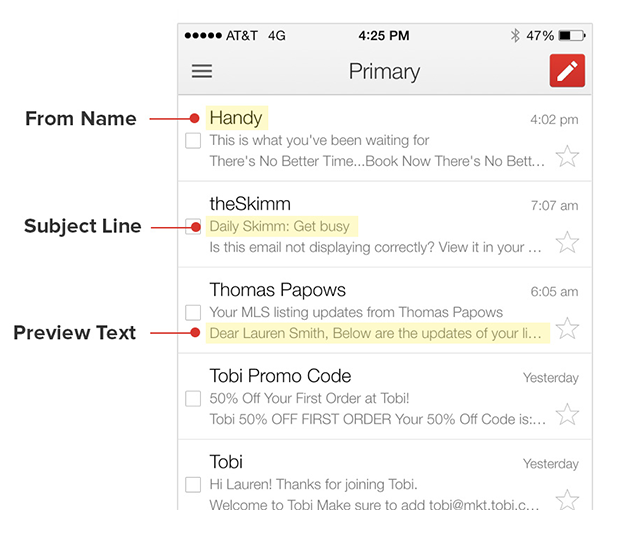
Your preview text is similar to a Tweet before Twitter changed the character limit. You just had a few characters to catch the attention of your subscribers and persuade them to read past the subject line.
The preview text aids readers on mobile devices in determining whether or not the email is worth opening. It’s crucial to remember that if you make a statement in your title, you should keep it in the preview text as well.
Use the snippet to offer your subscribers a good sense of what they’ll find within the email. They’ll likely open it if it’s interesting to them and compelling enough.
6. Make it personal
Unsplash’s email includes a collection of handpicked photos that the company believes would appeal to its target audience.
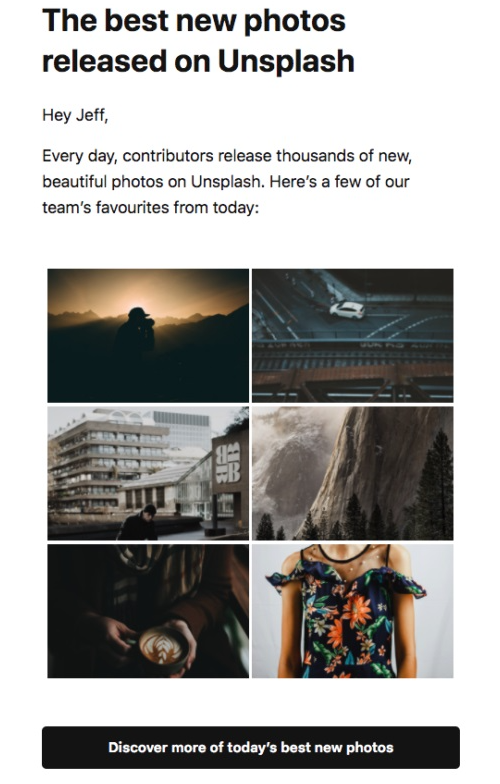
It cannot be emphasized enough that email copywriting must be personalized if you want it to be engaging. For starters, assume you’re sending an email to one person instead of dozens of people.
Pretend you’re speaking to a single friend or client. Write about the exciting information you want to share with them and describe what you want them to do. Email is, by definition, private and intimate. You must engage your readers on a deeper level if you want your copy to resonate with them.
7. Avoid using industry slang

This email from Airbnb has a lot of potential to be dull, but it instead manages to be both sympathetic and practical. It also provides a chance for the reader to make customer feedback.
You’re not writing to demonstrate how well-versed you are in your field. Use language that actual people can comprehend instead of industry jargon. Businesses like attorneys and investment companies should especially avoid using technical jargon in emails intended for the general public.
8. Pick your words carefully
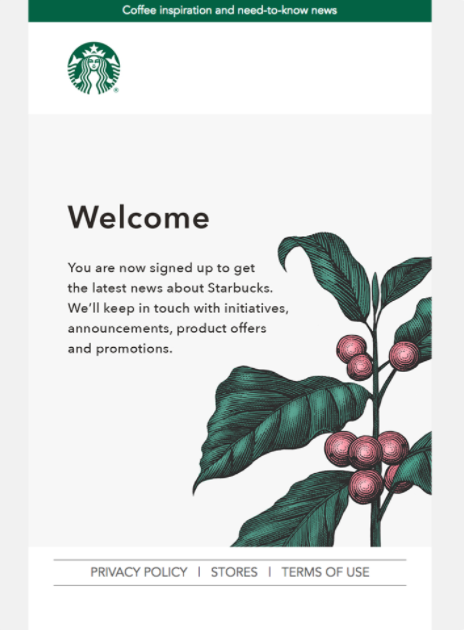
To maintain the conversational tone, use the terms “you” and “your” frequently in your sales copy. This will make it clear to your recipients that the email is about them, not you. You should also emphasize the advantages of your business rather than the features. When you write about features, you’re talking about yourself, your company, and your product.
When you write about benefits, you’re talking about how your company can make your customers’ lives better and enjoyable through email newsletters. So instead of focusing on features, talk about advantages, which focuses on your readers rather than your products and service, which is precisely what readers like to see in their mailbox.
Sales copy emails with a welcome tone are a fantastic way to get things off to a good start.
9. Check to see whether your content is relevant
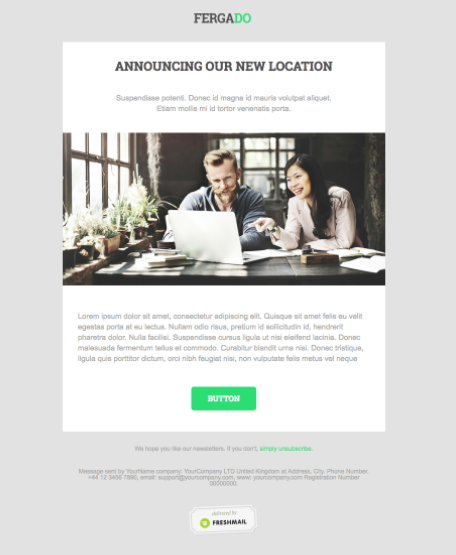
Would you phone or message everyone on your contact list to inform them about a fantastic new show you just discovered? Probably no, you’d just the ones you know might be interested in that particular genre/actor/topic.
You should also avoid sending identical emails to all of your customers. Generic emails to your whole list will not resonate with anybody and will almost definitely not engage. Instead, categorize your subscriber list based on previous visits, age categories, purchase habits, when they joined, and other criteria that are relevant to your industry and companies.
Invest time in getting to know your target audience and creating email copy will become much easier since you’ll already know what they want.
10. The newsletter content should be 90% informative
Your email newsletter readers most likely do not want to read about your products and services all of the time. Even if they like your products and want to hear from you, there’s only limited selling you can do before they cut you out.
Don’t focus too much on self-promotion in your email newsletters (and focus on providing informative, relevant, and timely material to your readers. Leave out the promotional sections unless you have a significant, exciting piece of news about your product, offer, or company.
11. Ensure that images have alt text
Given how essential visual material is to the rest of your marketing efforts, it’s only natural that you’d want to incorporate it in your emails. Email, on the other hand, is a little more complicated. Because most people won’t see photos, you’ll need to ensure your images contain one major element: alt text.
When photos aren’t loaded in an email, alt text displays as a substitute. This is particularly essential if your CTAs are images; you want to ensure visitors click even if the image is disabled.
12. Identify and address your issues
For example, do you wish to offer a single product, a product bundle, or a more costly version of your product? Your sales text can be used to persuade your audience to take any required action but it should be clear and straightforward.
Before you create your sales copy, test it, and put it in front of many people, you need to figure out what your conversion rate is. Based on past sales data or an informed guess, what proportion of your visitors currently engage on your sales page?
The only way to tell if the alterations you make are increasing your target KPIs is to know where you started.
When it comes to landing pages, the ideal approach is to establish a list of potential issues and go through them carefully along with the page, strengthening your arguments with testimonials, use cases, and statistics.
13. Use a newsletter editorial calendar
It’s a fantastic tool for organizing your emails by content, date, and topic, among other things. Planning is the foundation of a successful mailing strategy. Ask your coworkers to discuss with you, see what new features or events are coming soon, and what might be memorable.
Plan your newsletters for the following two to three months so you’ll be aware of any upcoming events, product updates, or promotions you can include in your emails.
This method will stop any last-minute accidents, and you will be able to create your email newsletters more comfortably, as well as avoid sending random, unstructured emails.
Creating your sales copy
When you’re ready to start creating your newsletter, make sure you follow the steps we have covered above. In addition, regardless of how your newsletter is formatted, you should keep the following most essential rules in mind:
- Make it concise and to the point. Don’t smother your audience with too many words or pictures. Things should be evened out. If you choose a photo-free newsletter, keep your content brief and to-the-point, so the email gets directly to the point and keeps the attention throughout.
- Make your content as valuable as possible. Nobody likes to open an email that contains plenty of ads. Instead, include bits of knowledge, recommendations, and helpful blog entries along the path to making the reader feel like they’re learning something. This will make them see the subscription much more valuable.
- Always double-check your emails. When a link doesn’t function or a design element is off, it’s unpleasant. Send test emails to yourself and a coworker who can provide you with meaningful insight. Check them on a computer and a smartphone inbox to ensure that the mobile and desktop designs are compatible.
Conclusion
Understanding your customers and how you can help them is the foundation to writing excellent email sales copy.
You can then speak to them in a conversational tone once you’ve figured it out. To find out what works, A/B test emails and send out previews to a small number of your most active subscribers. Email is a personal communication tool so treat it as such. If you interact with your readers like persons, they’ll feel more driven to take action.
About the author:
Bowen Moody is the Co-Founder & CEO of Wonderway – a sales performance platform proven to increase the revenue per rep. He’s built hundreds (thousands?) of sales training programs to set up sales people for success all over the world.





